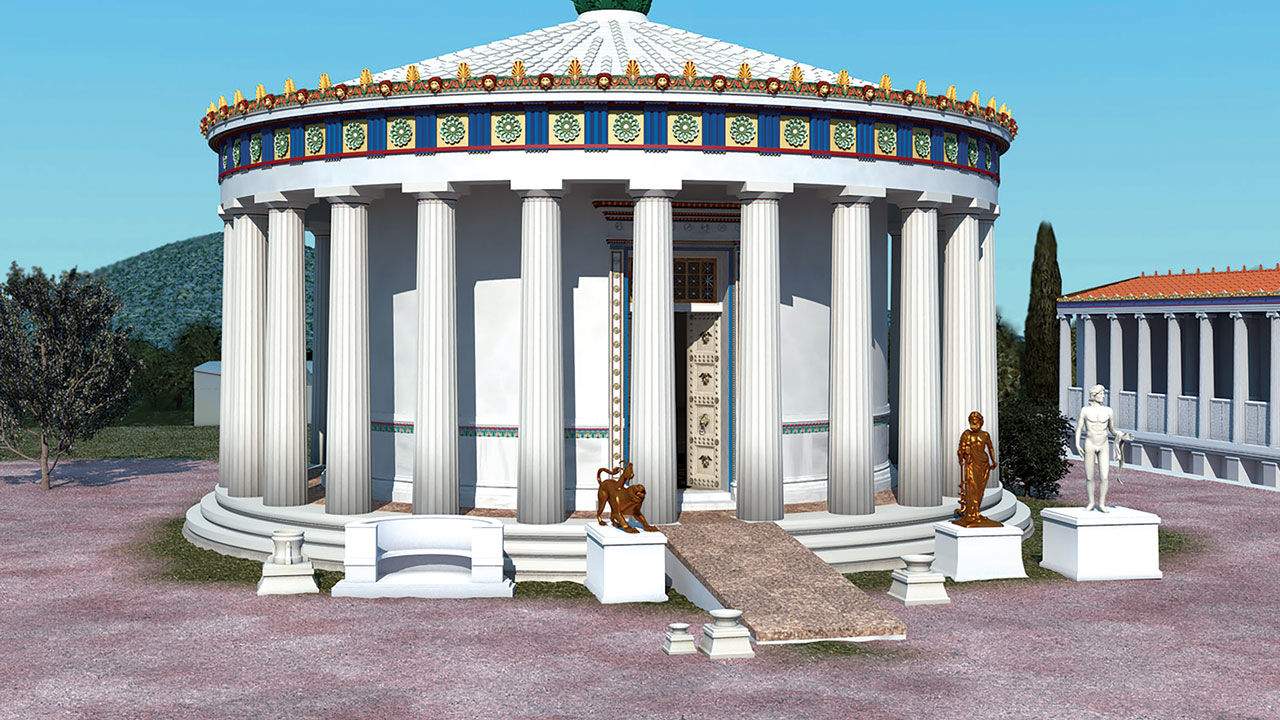Did ancient Greek temples have slides for the disabled? Research wants to prove it
Research at California State University aims to prove that the ancient Greeks cared for people with disabilities and that today’s slides for the disabled are not a modern invention, but were already used in ancient Greek temples. U.S. archaeologist Debby Sneed came to this conclusion by studying a number of Greek temples, mainly from the 4th century B.C.E. According to her, there has always been evidence to come to this conclusion, but the topic has not been much explored. His study was published the day before yesterday in one of the most prestigious academic journals in archaeology, Antiquity, published by the University of Cambridge.
In the collective imagination, Sneed explained to the journal Science, there is the idea that the Greeks were all athletic and fit and that “there was no room in Greek society for anyone who did not have an able body.” In fact, even the artworks themselves suggest otherwise: vascular depictions and sculptures abound of people holding on to sticks or walking on crutches; moreover, anatomical studies of skeletons reveal that arthritis and joint problems were common. And many descriptions of physical woes are found not only in Hippocrates, but also in the works of Homer, Hesiod, and other ancient Greek authors. In addition, many people with disabilities left many votive offer ings at shrines dedicated to Asclepius, the god of medicine.
And the discovery of slides for the disabled is associated precisely with the god Asclepius. Or rather: the presence of ramps in Greek temples has been well known for a long time, but they were thought to be intended primarily for transportation (for example, of animals that were sacrificed during rituals, or of decorative apparatus). But the evidence from the study of the temples of Asclepius has suggested that the chutes probably served the disabled as well: the two sanctuaries dedicated to the god that are best preserved in fact have many more such ramps than other similar sacred buildings, a sign that they evidently served to facilitate access for people who asked the deity for grace for their physical problems. The main building of the sanctuary of Asclepius at Epidaurus, for example, has one main ramp and two other side ramps, and in all, there were at least eleven stone chutes in the various temples that comprised it: “the evidence we have available,” the study says, “indicates that in sanctuaries dedicated to healing, which accommodated many people with a wide variety of illnesses, injuries, and health problems, including mobility problems, they had more ramps than sanctuaries dedicated to anything else.” The sanctuary at Epidaurus, the most important for healing, consisted of several buildings, all of which had ramps, and the same is true of the one at Corinth. In the vicinity of the city, Sneed explains, there was a temple of Asclepius equipped with as many as two access ramps, and this feature is seen only in the largest temples, such as the temple of Zeus at Olympia, one of the largest cult buildings in all of ancient Greece.
In the community, Science reports, there is some skepticism around Sneed’s research, however. According to Katja Sporn, director of the German Institute of Archaeology in Athens, who previously examined access ramps to Greek temples in one of her studies, she notes that such structures abound especially in the Peloponnese, and in her opinion this is purely an architectural trend. Or at most that they were parts of the building intended for different uses: “They helped everyone, not just the disabled. But I am not convinced that they were specifically designed for people with disabilities.” Still others (such as Jane Draycott of the University of Glasgow), however, welcome Sneed’s study as a step forward in understanding what life was like for the differently abled in the past. Draycott disagrees with her colleague: “these sites mostly gathered people with disabilities: so wouldn’t it make sense to think that they were trying to be more comfortable for them?”
Pictured is an artistic representation of a ramp in the sanctuary of Asclepius at Epidaurus.
 |
| Did ancient Greek temples have slides for the disabled? Research wants to prove it |
Warning: the translation into English of the original Italian article was created using automatic tools. We undertake to review all articles, but we do not guarantee the total absence of inaccuracies in the translation due to the program. You can find the original by clicking on the ITA button. If you find any mistake,please contact us.





























